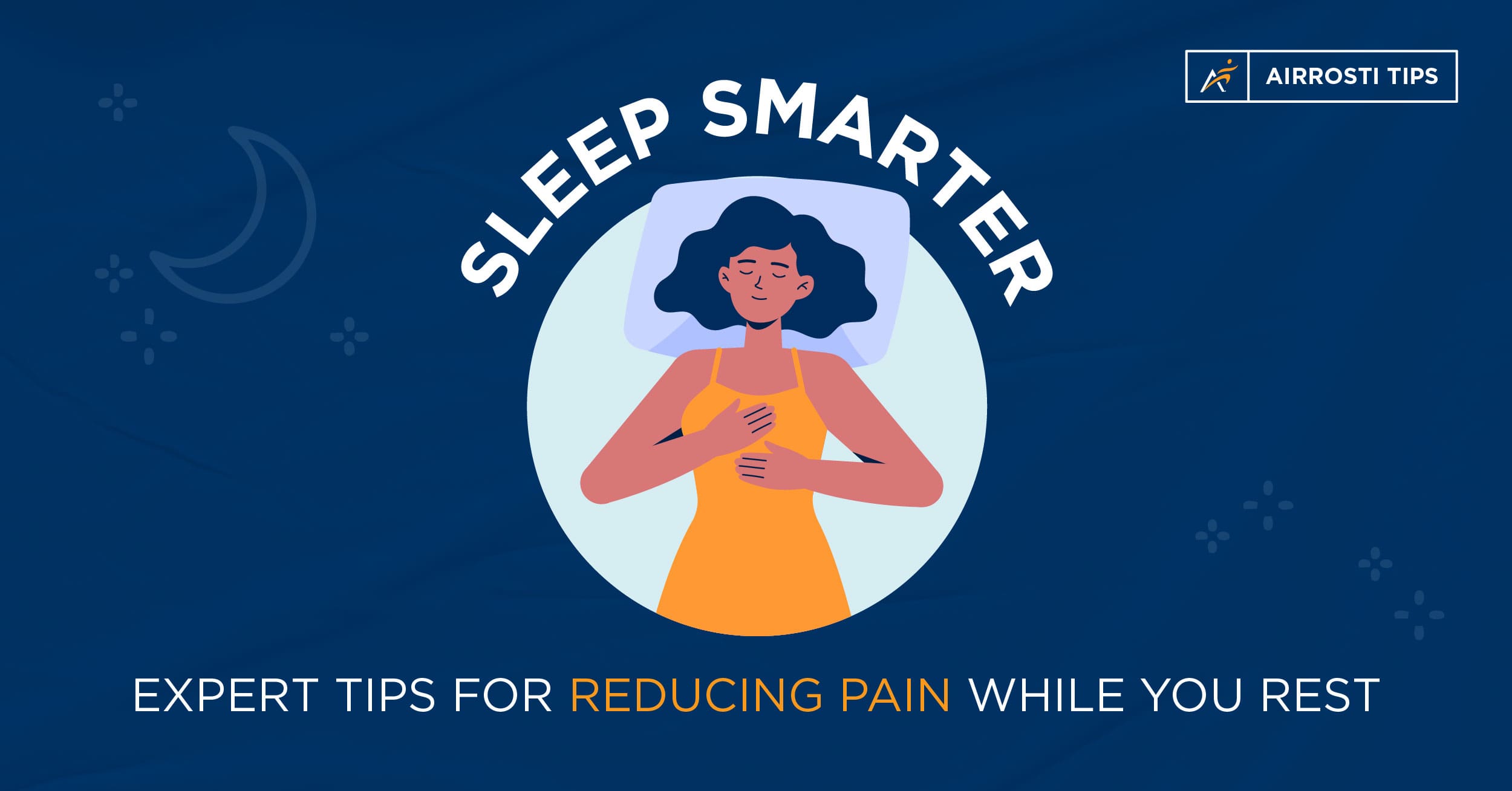May is Sleep Awareness Month and there’s a good reason an entire month is dedicated to this vital function. Sleep is necessary for brain performance, reducing chronic diseases, improving moods, enhancing memory, and many other critically important mental and physical needs.
Did you know the sleeping position we choose largely affects our quality of sleep? Here are the pros and cons of the three primary positions most of us settle into when hoping to catch some much-needed Zzzs.
Sleeping on Your Back
Sleeping on your back has many benefits and may feel like the most natural sleeping position. It helps the spine stay in a neutral position and distributes weight proportionally along the spine. Placing a pillow beneath the knees can add further support to maintain your body’s personal curvature, help relieve knee and hip pain, and even reduce tension headaches and sinus buildup. Sleeping with your hands to the side or on your chest can also reduce neck and back pain.
Though considered an ideal position, back sleeping is not suitable for everyone. Those who snore or have sleep apnea may want to avoid this position as the tongue can collapse to the back of the throat due to gravity. Individuals with frequent heartburn may experience worsening symptoms as a result of gravity as well. Pregnant women in their second trimester and beyond should avoid back sleeping as the growing uterus puts pressure on the main artery, affecting proper blood flow to the heart.

Sleeping on Your Side
Side sleeping has many benefits, most of which address the inadequacies of back sleeping. It can reduce snoring and may lessen sleep apnea as the airway is more open. Laying on your left side (most recommended by professionals), can help reduce acid reflux and is highly encouraged for pregnant woman to improve blood circulation. Laying on the right side is ideal for individuals with heart conditions as it can lessen the pressure on the heart and improve blood flow. Side sleeping is widely used to help prevent back pain, particularly when a pillow is placed between bent knees. This will keep the pelvis and hips more aligned with the spine. The core should also bend towards the knees to open spaces between the spinal vertebrae, lessening tension of the discs.
Despite these many benefits, sleeping on the side can put repetitive pressure on the shoulders and hips, especially if you sleep on the same side nightly. It is also known to cut off circulation in the arm resting under the body because of the weight it bears.

Sleeping on Your Stomach
Of the three primary sleeping positions, sleeping on your stomach is typically the least recommended, though it can also benefit those with sleep apnea and snoring as it helps keep the airway more open.
On the other hand, this position is known to strain the neck by increasing weight on the neck. Studies show that this strain can often lead to migraines as the position requires twisting of the neck, causing muscle tension and misalignment. It also creates back pain, particularly affecting the lumbar area.

What the Experts Recommend
“Our bodies are designed to move but also require balance. Just as too much standing or too much sitting can catch up with us throughout our waking hours, too much time spent in one sleeping position may cause issues as well,” says Terra Botha DC, ACP, Regional Clinical Supervisor at Airrosti Dominion.
“Ideally, individuals should strive to lay on their back 50% of their sleep with a pillow under their knees, if needed to improve comfort. Next, 25% should be spent laying on the right side, and 25% on the left side, using pillow supports between the knees and elbows.”
That may sound complicated; however, each sleep cycle lasts around 90 minutes, and our bodies naturally shift positions multiple times throughout the night. By being mindful of how you fall asleep and using supportive pillow placements, you can train your body to adopt better sleep habits over time.
A balanced combination of back and side sleeping can help reduce pressure on the spine and joints, promote healthy circulation, and minimize the risk of waking up with stiffness or discomfort. Just like good posture during the day, balanced sleep posture plays a key role in maintaining long-term musculoskeletal health.
Now, Let’s Have Some Pillow Talk
We all have a comfort preference when our head hits the pillow, from soft and feathery to dense and firm, but your pillow impacts far more than just your head’s comfort. While sleeping positions greatly impact your body’s comfort and quality of sleep, their effectiveness begins with the right pillow.
For every position, the neck should be aligned with the spine, ideally with the hips, shoulders, and ears in a line; however, pillows are not a one-size-fits-all solution. Here are a few tips to help you find the right pillow based on your sleeping position:
Back Sleepers:
If you sleep on your back, it’s important that your pillow is not too high.
- A pillow of medium height that supports the natural curvature of your neck is best – especially cervical/contour pillows. These pillows are designed with a roll under the neck which further supports the cervical spine.
- Place the higher side under the neck with the lower side under the head to reduce strain of the neck and shoulders.
- Medium firmness is ideal. Regularly check pillow firmness as it should be neither too hard nor too soft to provide proper support.
- Memory foam is preferred, as it offers additional support by conforming to your natural shape
Side Sleepers:
A thicker, taller pillow is most optimal for alignment if you sleep on your side.
- A very firm pillow is ideal.
- Avoid pillows that are too low or too high as heights can affect the curves of the spine. High pillows can elevate the head too much, causing strain to the neck.
- Cervical/contour pillows are also recommended for support of the neck which further supports the cervical spine. A rolled-up hand towel placed under the neck is also an option to fill the space between the shoulders and head.
- Memory foam is preferred, offering additional support by conforming to your natural shape
Stomach Sleepers:
A very thin pillow or no pillow at all is the best option to avoid strain to the neck.
- If using a pillow, a very soft pillow is ideal as twisting the neck puts pressure on your nerves.
Regardless of your pillow type, be sure to monitor the wear and tear that occurs over time and replace it when appropriate.
If you are experiencing muscle or joint pain as a result of uncomfortable sleep, schedule an appointment with an Airrosti Provider. Our Providers seek to resolve injuries at the source to help bring fast, effective relief. In addition, Airrosti Providers supply the tools and resources needed to help you address problem areas as they appear so you can keep doing the things you love pain free.
We offer in-clinic and telehealth appointments. Schedule below or call us at (800) 404-6050 for more information!









